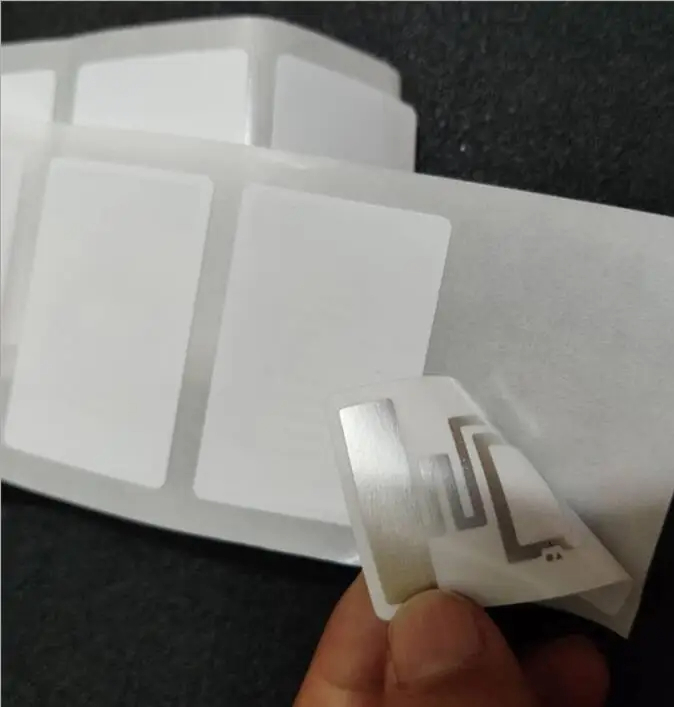
Expanding on RFID Tag Applications in the Food Sector
RFID tag technology enhances food and beverage processing by improving efficiency, safety, and management effectiveness, revolutionizing traditional practices.
Abbreviation | Number | EPC Memory | User Memory | TID Prefix | TID Memory |
Higgs 3 | Alien Higgs 3 | 96-bit | 512-bit | E200 3412 | 64 bits of serialized TID with 48-bit serial number |
Higss 9 | Alien Higgs 9 | 96/496-bit | Up to 688-bit | – | 48 bits of serialized TID with 32-bit serial number |
Higgs 4 | Alien Higgs 4 | 128-bit | 128-bit |
| 64 bits of serialized TID with 32-bit serial number |
M4D | Impinj Monza 4D | 128-bit | 32-bit | E280 1100 | 96 bits of serialized TID with 48-bit serial number |
M4i | Impinj Monza 4i | 256-bit | 480-bit | E280 1114 | 96 bits of serialized TID with 48-bit serial number |
M4QT | Impinj Monza 4QT | 128-bit | 512-bit | E280 1105 | 96 bits of serialized TID with 48-bit serial number |
R6-B | Impinj Monza R6-B | 96-bit | – | E280 1171 | 96 bits of serialized TID with 48-bit serial number |
R6 | Impinj Monza R6 | 96-bit | – | E280 1160 | 96 bits of serialized TID with 48-bit serial number |
R6-A | Impinj Monza R6-A | 96-bit | – | – |
|
R6-P | Impinj Monza R6P | 96/128-bit | 64/32-bit | E280 1170 | 96 bits of serialized TID with 48-bit serial number |
M730 | Impinj Monza M730 | 128-bit | – | E280 1191 | 96 bits of serialized TID with 48-bit serial number |
M750 | Impinj Monza M750 | 96-bit | 32-bit | E280 1190 | 96 bits of serialized TID with 48-bit serial number |
M770 | Impinj Monza M770 | 128-bit | 32-bit |
|
|
M775 | Impinj Monza M775 | 128-bit | 32-bit |
|
|
M780 | Impinj Monza M780 | 496-bit | 128-bit |
|
|
M781 | Impinj Monza M781 | 128-bit | 512-bit |
|
|
M4E | Impinj Monza 4E | Up to 496-bit | 128-bit | E280 110C | 96 bits of serialized TID with 48-bit serial number |
X-2K | Impinj Monza X-2K Dura | 128-bit | 2176-bit | – | 96 bits of serialized TID |
X-8K | Impinj Monza X-8K Dura | 128-bit | 8192-bit | – | 96 bits of serialized TID |
im | NXP im | 256-bit | 512-bit | E280 680A | 96 bits of serialized TID with 48-bit serial number |
M5 | NXP UCODE 5 | 128-bit | 32-bit | E280 1102 | 96 bits of serialized TID with 48-bit serial number |
R6 | NXP UCODE 6 | 96-bit | – | E280 1160 | 96 bits of serialized TID with 48-bit serial number |
U7 | NXP UCODE 7 | 128-bit | – | E280 6810 | 96 bits of serialized TID with 48-bit serial number |
U7XM+ | NXP UCODE 7+ | 448-bit | 2K-bit | E280 6D92 | 96 bits of serialized TID with 48-bit serial number |
U7XM-1k | NXP UCODE 7XM | 448-bit | 1K-bit | E280 6D12 | 96 bits of serialized TID with 48-bit serial number |
U7XM-2k | NXP UCODE 7XM | 448-bit | 2K-bit | E280 6F12 | 96 bits of serialized TID with 48-bit serial number |
U8 | NXP UCODE 8 | 128-bit | – | E280 6894 | 96 bits of serialized TID with 48-bit serial number |
U9 | NXP UCODE 9 | 96-bit | – | E280 6995 | 96 bits of serialized TID with 48-bit serial number |
UDNA | NXP UCODE DNA | 224-bit | 3K-bit | E2C0 6892 | 96 bits of serialized TID with 48-bit serial number |
UDNA C | NXP UCODE DNA City | 224-bit | 1K-bit | – | 96 bits of serialized TID |
UDNA T | NXP UCODE DNA Track | 448-bit | 256-bit |
| 96 bits of serialized TID |
I2C | NXP UCODE I2C | 160-bit | 3328-bit |
| 96 bits of serialized TID with 48-bit serial number |
G2iM | NXP UCODE G2iM | 256-bit | 320/640-bit | E200 680A | 96 bits of serialized TID with 48-bit serial number |
G2iM+ | NXP UCODE G2iM+ | 448-bit | 512-bit |
|
|
G2iL | NXP UCODE G2il | 128-bit | – | E200 6806 | 64 bits of serialized TID with 32-bit serial number |
In conclusion, UHF RFID inlays play a crucial role in enhancing the efficiency, accuracy, and overall performance of operations across various industries. With their robust features, versatile applications, and significant benefits, they represent a valuable investment for businesses looking to optimize their processes and stay competitive in a rapidly evolving market.
Newest trends and common knowledge in RFID laundry tags.

RFID tag technology enhances food and beverage processing by improving efficiency, safety, and management effectiveness, revolutionizing traditional practices.

In today’s fast-paced world, technology is continuously evolving, enhancing convenience and efficiency in our daily lives. RFID tag utilizes electromagnetic fields to automatically identify and track tags attached to objects.

NFC key fobs with NTAG213 chips are durable, waterproof devices enabling secure, contactless communication. Perfect for access control and asset tracking.
Didn’t find what you want? Ask our manager for help!